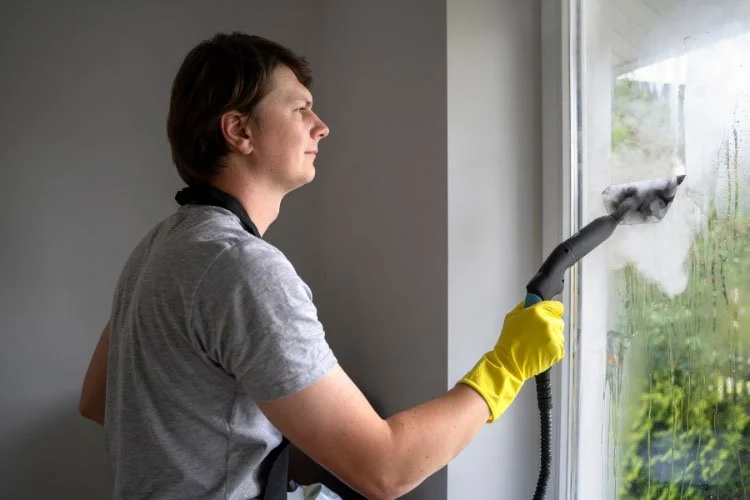How Cleaning Services Prevent Mold Growth in Damp or Humid Climates
Nov 06, 2025
Mold growth is one of the most common and persistent problems in homes and buildings located in damp or humid climates. Not only is it unsightly, but it can also cause serious health issues, such as allergies, respiratory irritation, and asthma flare-ups. What many homeowners don’t realize is that mold can develop in as little as 24 to 48 hours in the right conditions — especially in areas with poor ventilation and excess moisture.
Professional cleaning services play a vital role in preventing mold before it becomes a problem. With specialized tools, cleaning products, and techniques, they help maintain a dry, sanitary, and mold-free environment that’s both safe and comfortable.
1. Understanding How Mold Develops
Mold thrives in areas with excess moisture and limited air circulation. Kitchens, bathrooms, basements, and laundry rooms are particularly vulnerable. Once spores settle on damp surfaces, they multiply quickly, spreading through walls, ceilings, and fabrics.
Key conditions that encourage mold growth include:
High humidity levels (typically above 60%)
Water leaks or condensation buildup
Poor ventilation or stagnant air
Organic materials like wood, paper, or dust that feed mold spores
Professional cleaners are trained to identify these problem areas and take preventative measures to stop mold from forming in the first place.
2. Controlling Moisture Levels
Moisture control is the foundation of mold prevention. Professional cleaning services use tools and techniques to detect and reduce humidity in your home or workspace.
Effective moisture management strategies include:
Using dehumidifiers in damp rooms such as basements and bathrooms.
Wiping and drying wet surfaces immediately, especially after mopping or spills.
Cleaning around sinks, showers, and washing machines where leaks often occur.
Inspecting for water damage or plumbing issues during cleaning sessions.
By addressing moisture proactively, cleaning services stop mold before it has a chance to develop.
3. Deep Cleaning Mold-Prone Areas
Certain parts of the home need extra attention to prevent mold from taking hold. Professionals focus on these high-risk areas using safe and effective methods.
Typical focus areas include:
Bathrooms: Disinfecting tiles, grout, and shower curtains to remove soap scum and prevent mildew.
Kitchens: Cleaning behind appliances and under sinks where moisture often collects.
Basements: Vacuuming with HEPA filters and disinfecting hard surfaces to remove dust and organic buildup.
Laundry Rooms: Wiping washer seals and keeping the area dry to prevent musty smells and mold rings.
Regular deep cleaning of these spaces prevents mold spores from finding a place to grow and spread.
4. Using Mold-Inhibiting Cleaning Products
Professional cleaners use specialized products designed to discourage mold growth. These are often eco-friendly, non-toxic, and safe for use around children and pets.
Mold prevention techniques include:
Applying anti-fungal and anti-microbial solutions to high-moisture areas.
Using natural cleaning agents like vinegar and baking soda to break down mold spores.
Avoiding harsh chemicals that can damage surfaces or create lingering fumes.
Regularly disinfecting ventilation grilles, baseboards, and walls to eliminate mold spores before they spread.
These products create a long-lasting protective barrier that keeps mold from reappearing between cleaning sessions.
5. Improving Ventilation and Airflow
Good airflow helps reduce humidity and dry out surfaces faster. Professional cleaners often recommend or incorporate ventilation improvements as part of a mold prevention plan.
Airflow-enhancing methods include:
Keeping air vents and filters clean to prevent airflow blockages.
Recommending exhaust fan use in bathrooms and kitchens after showers or cooking.
Leaving windows open (when weather allows) to let moisture escape naturally.
Avoiding over-cluttered areas, since stacked items trap heat and moisture.
Proper ventilation helps keep your indoor environment fresh, dry, and mold-resistant.
6. Regular Cleaning Schedules for Ongoing Prevention
Mold prevention isn’t a one-time task—it requires consistency. Professional cleaning services offer maintenance schedules that ensure your home remains mold-free all year long, especially during humid seasons.
Benefits of regular cleanings include:
Early detection of problem areas before mold appears.
Continuous control of moisture and dust buildup.
Ongoing application of mold-preventive products.
A cleaner, fresher indoor environment with better air quality.
Routine professional cleaning keeps humidity, dust, and bacteria under control — key factors in mold prevention.
Conclusion
In damp or humid climates, mold can quickly turn from a minor nuisance into a major health and structural problem. Professional cleaning services provide the expertise and tools needed to prevent mold growth by managing moisture, improving ventilation, and maintaining thorough cleanliness. Their proactive approach not only protects your home’s appearance but also preserves your indoor air quality and your family’s well-being.
Ready to keep your home fresh, dry, and mold-free year-round? Contact Sweep Cleaning Services Burnaby today to request a quote. Our expert team will ensure your home stays spotless, healthy, and completely protected from unwanted mold growth.
Let’s Keep In Touch

